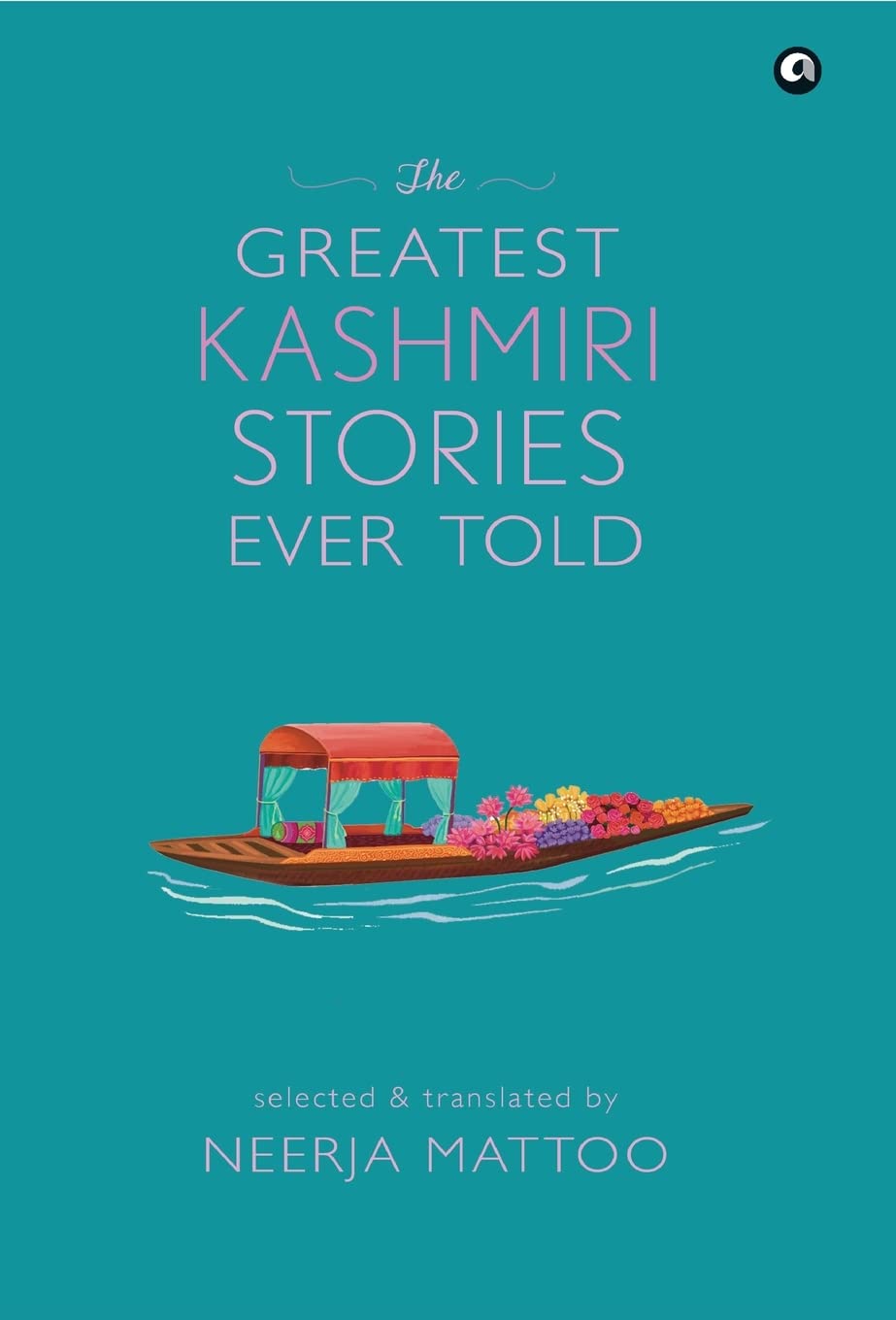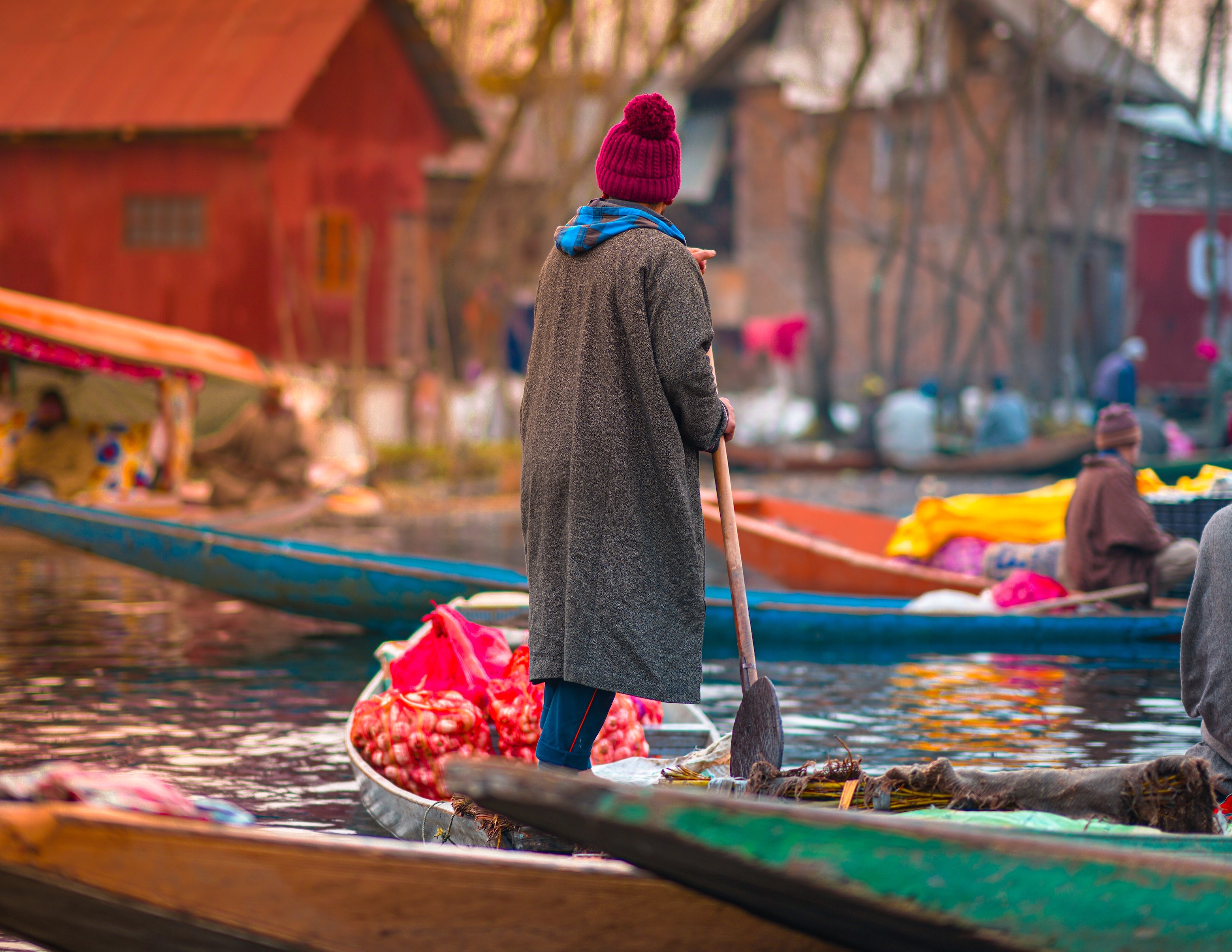Kashmir is a cradle of storytelling, says editor Neerja Mattoo, while introducing the book The Greatest Kashmiri Stories Ever Told to us with a brief and brilliant historical overview of fiction writing in the Valley. The title in itself is a bold claim, impossible to either accept or refute.
But even for those who reject Mattoo’s claim of having compiled a collection of the greatest stories to ever come out of Kashmir, this collection has to be a top drawer exhibition of its storytelling talent. A treasury of 25 translated tales, the book focuses on the one element that is often left out of the conversations about Kashmir – its people. It is also a reminder that Kashmir exists beyond its tragedies. In the fabled land surrounded by mountains, there too reside people who live, laugh, sigh and sob as other people do.
In its bid to represent all of Kashmir, the characters are often placed in varied backgrounds ranging from the bread tandoors of old downtown to the waterweed littered riverbanks, from beautiful houseboats of the Dal to the eerie cemeteries of Srinagar, from overcrowded Sufi shrines to the deserted Amira Kadal Bridge on an Indian Republic day morning. It brings the everyday life of Kashmir to readers. Scenes like that of a young man taking out a cigarette from his pocket and lighting it from the embers of his Kangri or people asking a baker for live charcoal from his oven on an ice-cold morning provide a vicarious experience of any Kashmiri mohalla.
In the chronological arrangement of the stories, the first batch is from the time of India’s Independence. Writers like Dinanath Nadim, Somnath Zutshi, Ali Mohammad Lone and others, influenced by the Progressive Writers Association represent the revolutionary spark that once resided in the hearts of Kashmiri intelligentsia. The history of the leftward inclination of Kashmiri intellectuals and even the society at the time of decolonisation is something that has over the years drowned out in the hubris of nationalist assertions. May it be Sansar Chand from ‘To A Slavery Born’ or Mahmud from ‘Paper Tigers’, there are some unmistakable common elements in the characters from this first batch of stories: solidarity of the working class, intersubjective hate for the money lending and shop owning ‘Lalas’, and a very subtle hint of anti casteism – another aspect of Kashmir’s daily life that is seldom explored.
Once the spell of socialism over the Kashmiri ‘Afsana Nigars’ (short story writers) was broken, no clear demarcation of a single theme dominating fiction writing in the valley was to be seen. Writers who had earlier stuck to issues of the local working class started exploring universal themes of philosophical interests. Coming generations delved more into the surreal as psychology, mental health, trauma and environmental activism increasingly became central considerations of the authors. As we move towards the lateral end of the book, we see stories turn more abstract with the tales placed much more in philosophy than in the realities of society. While this can be a patterned change in the story writing technique and selection of themes by the authors, it may also suggest shrinkage in the space to express social truths through the story.
Also read: Book Review: An Assembly of Assamese Greats

The Greatest Kashmiri Stories Ever Told Edited by Neerja Mattoo Aleph Book Company (February 2022)
The Mourners is the most cinematic and honest telling of an emotional tale. It tells us about the awkward, bickering and beautiful coexistence of differing religious and political beliefs along with contrasting cricket team preferences in a nuanced and textured depiction of a Pandit woman’s funeral. It is in the real sense, a contender for the greatest Kashmiri story ever told. ‘My Enemy’, denoting the senselessness of Partition and the separation of Kashmiri families across the LOC surveys a theme not explored often. “How can a man be his brother’s enemy?” a man asks of soldiers guarding false borders. Shahmal and Jani’s crooked to-and-fro in Amin Kamil’s Cockfight is a piece of comic fiction writing worthy of reverence in any language. ‘The Boy is Guilty’ is another tragically hilarious take on the invariably culpable nature of Kashmiris as seen from the outside.
The book features stories that explore truly universal themes. Human Heart is a tale of family relations; the simplicity and the complexity of them. It is the story of a marriage that was unwelcomed at first but assumes the character of a love affair later. It could have been a story of any family in any village anywhere in the world but the chochwur bread, waterweed and lotus metaphors along with the constant presence of a Jajeer ( Hubble Bubble ) and Kangir ( Firepot ) situate the story inside the valley. Similarly, Paper Tigers while being a narration of class oppression and dissent, is also a tale of a simple baker’s shop in an old city producing chochwurs for the whole mohalla to eat.
Every once in a while, the book has passing references to many important issues that Kashmiri people are constantly dealing with. The frequency with which mentally ill characters turn up is quite telling of the simmering mental health problems in a valley where one in every three people is suffering from some kind of a mental illness. It exposes divisions that are seldom acknowledged. Like in Beggars at the Dargah, even within the cohort of beggars outside the shrine, the ones from the city consider themselves superior to the ones from the villages. Even in madness and penury, this age-old city-village conflict manages to surface. The book also reveals the love that many try to brush under the carpet. Like in Anguish, Samad Joo’s pride in Triloknath’s achievements runs a healing touch over Triloknath’s longing for his beloved Vyeth (Jhelum). The often exaggerated values of Kashmiriyat also make an appearance, but only to the extent necessary and digestible.
Also Read: Review: A Memoir From Kashmir Bracketed by Death
The final part of the book takes on the Kashmir conflict mostly focussing on the exodus of Kashmiri Pandits. Moss Swimming in the Water stands out as a story exceptionally well told. It very carefully and skilfully put the two-sided story of Kashmiri Pandits and Muslims as it truly is; with both sides as losers. It does not contest one loss (loss of Kishen Lal’s house) with another (that of Rashid’s son). So often one loss is used to justify the other but this story rightfully stays clear of that. It explains the web of insecurities and suspicions raised by circumstances between friends of old who at the time of greatest grief, could only manage to think of each other.
The book is about Kashmiriyat, not in the perverted political sense the term is used today, but in terms of its wickedness, openness, pain, longing for a past shared and fear of a future uncertain. If the story of the pain of any Kashmiri has to be told, it has to be told this way. With the understanding of the love for this beautiful land that binds all her children together. Kashmir, as opposed to the divisive symbol it has become today, has uniting powers; our collective love for the place and the simplicity it represents. ‘Ded’ (from The Call) remembers, not just her own home but her Muslim neighbours as well. Her longing for Kashmir is not a longing for Kashmiri land but a Kashmiri life; a life that she shared with Hajira as well as Nath and Samad. Ded’s heart aches for the broken relationships more than anything else.
The only shortcoming in this collection however is the absence of certain narratives. For reasons beyond comprehension, the book does seem to prioritize the pain of those who left over that of those who stayed. The editor believes that Kashmir is a cradle of storytelling. But the choice of stories or rather a rejection of other stories from this collection suggests that all stories are not welcome in this cradle.
Bilal Ahmad Tantray is a PhD scholar from Shiv Nadar University and an alumnus of Jamia Millia Islamia.
Featured Image: Unsplash

